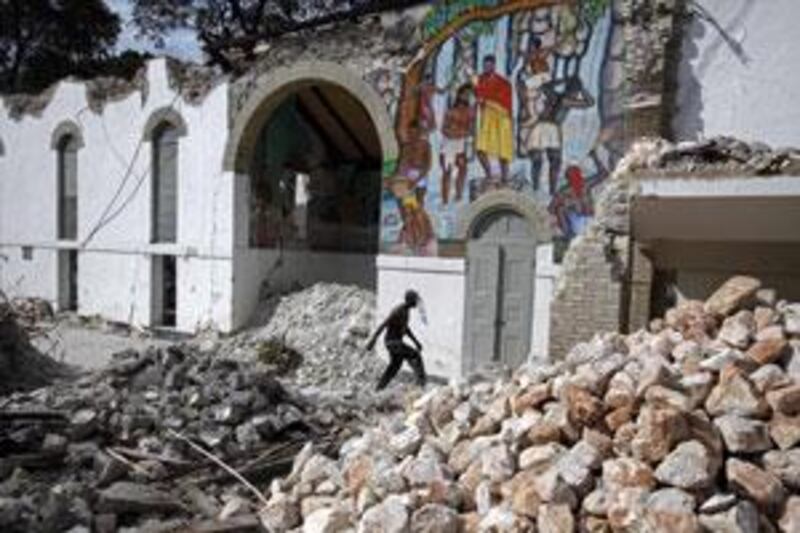DUBAI // After spending two months working 20-hour shifts to help Haiti recover from a devastating earthquake, one would think William Twyford would be happy to be back in Dubai. But just hours after arriving home, the exhausted Australian, who works for the United Nations, admitted that leaving his colleagues and the struggling Haitians behind had been tough.
"I found it difficult to leave," he said. "You spend a lot of time there and form close relationships with the people you are working with. You wonder how they are managing." He and his colleague, Dane Novarlic, were among the first relief workers to arrive in Haiti following the magnitude 7.0 earthquake on January 12, which killed more than 200,000 people. The telecommunications experts, who work for the World Food Programme, have more than a decade of combined experience in disaster relief.
Within hours of the earthquake, the pair left Dubai for Haiti, to re-establish power and communications in Port-au-Prince. They arrived 48 hours later, after hitching a ride from Santo Domingo, in the Dominican Republic, with one of the first coastguard flights in. The men, part of the programme's Fast IT and Telecommunications Emergency and Support Team (Fittest) were later joined by other information communication technology (ICT) staff.
They have helped to rebuild communications networks for humanitarian workers from a makeshift office in a small, grassy compound at the airport. The area was being used by more than 300 humanitarian and diplomatic staff. Many were stationed in Haiti when the disaster struck and had lost homes, family, friends and colleagues. "Within ICT alone we had three national staff and one international officer there before the earthquake," said Mr Novarlic, who led the team.
"The international staff member, who I knew from a previous operation, had lost his house, he lost everything. We organised the first possible airlift to send him out and did the same for the national staff." Gianluca Bruni, the head of Fittest's IT division, said: "One of our staff couldn't find her husband for three days and, at the same time, she was responsible for the entire operation." They set about establishing power and a satellite phone connection, so that staff within the quarters could contact loved ones and set about their work, they tried to get used to the scene around them.
"The place we set up was part of the airport compound," said Mr Novarlic. "We had two hangers in front, usually used for storage. One was being used as an emergency room, another was a hospital, and the containers next to it were a morgue. "Truck after truck would arrive with people destined for the ER, hospital or morgue. It was like that for a few days and the morgue containers could not cope. Bodies in bags were being piled up the way wood is for the winter.
"After a few days they dug the mass grave and cleaned up a little bit, but that was the first three days just next to the place where we were basically living and working." The men worked from 5am until 2am the next day, then tried to find somewhere to lay with their cotton sheets. They took turns to make water runs to a nearby purifying station. When they ran out of the ready meals they had packed, local people were employed to prepare food.
Mr Twyford had worked for three months in Haiti last year. When he returned on Monday, he could barely describe how he felt returning to find the places he had known now destroyed. "Going back to the old office, where I had spent a lot of time, and seeing it cracked and leaning and empty, the Hotel Christopher that used to be a big eight- or nine-storey hotel was completely collapsed, the local staff not having houses."
With communications now up and running, their part in the emergency stage of the mission is over. More than 200,000 of the 1.3 million people made homeless are camping in 21 "tent cities", which are now at risk of flooding. "People who ran out of their houses and camped down on the low river and beaches now face those areas turning to swamp or disappearing under a metre of water," said Mr Novarlic. "Then it will be hurricane season. Unfortunately, we have only seen the first effect."
@Email:loatway@thenational.ae






